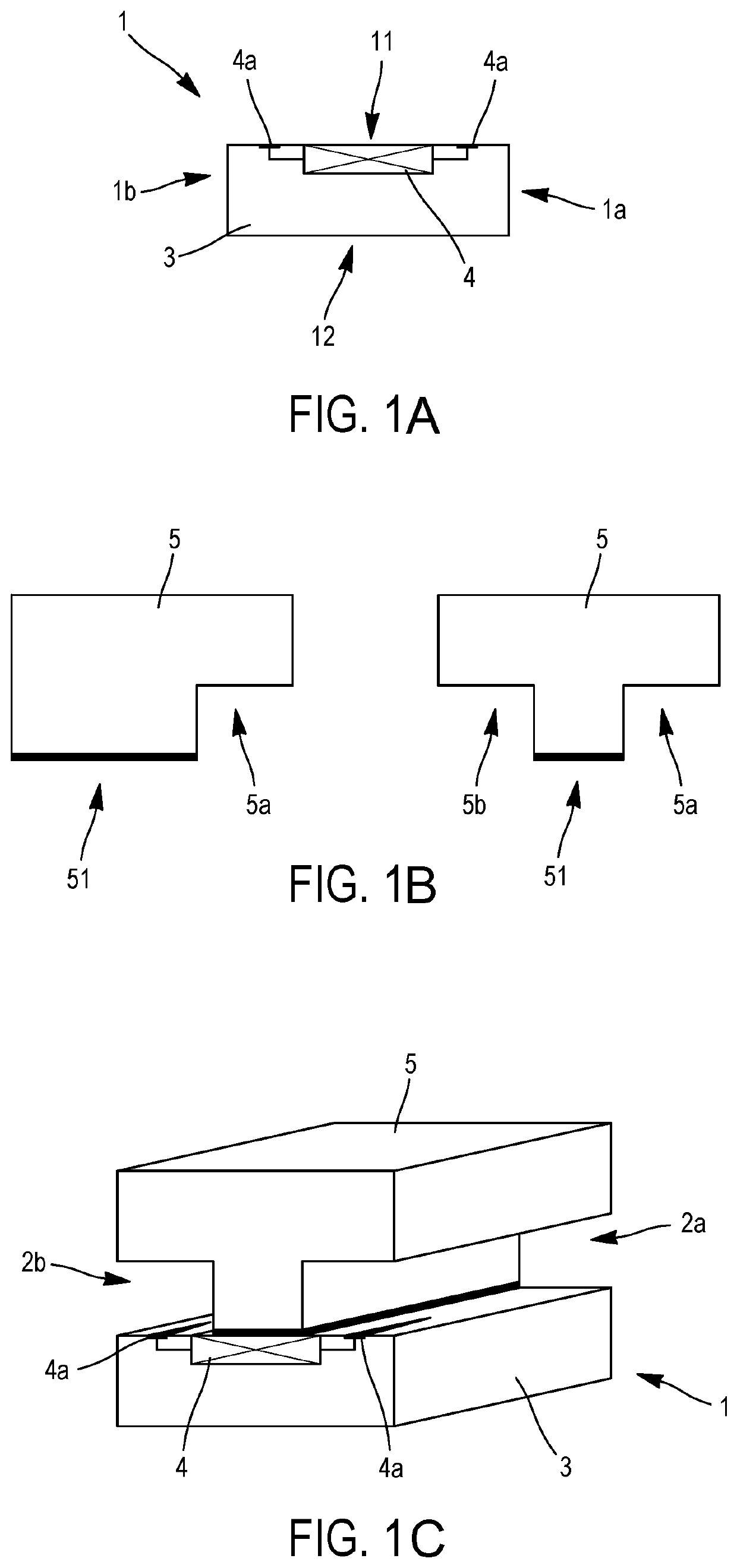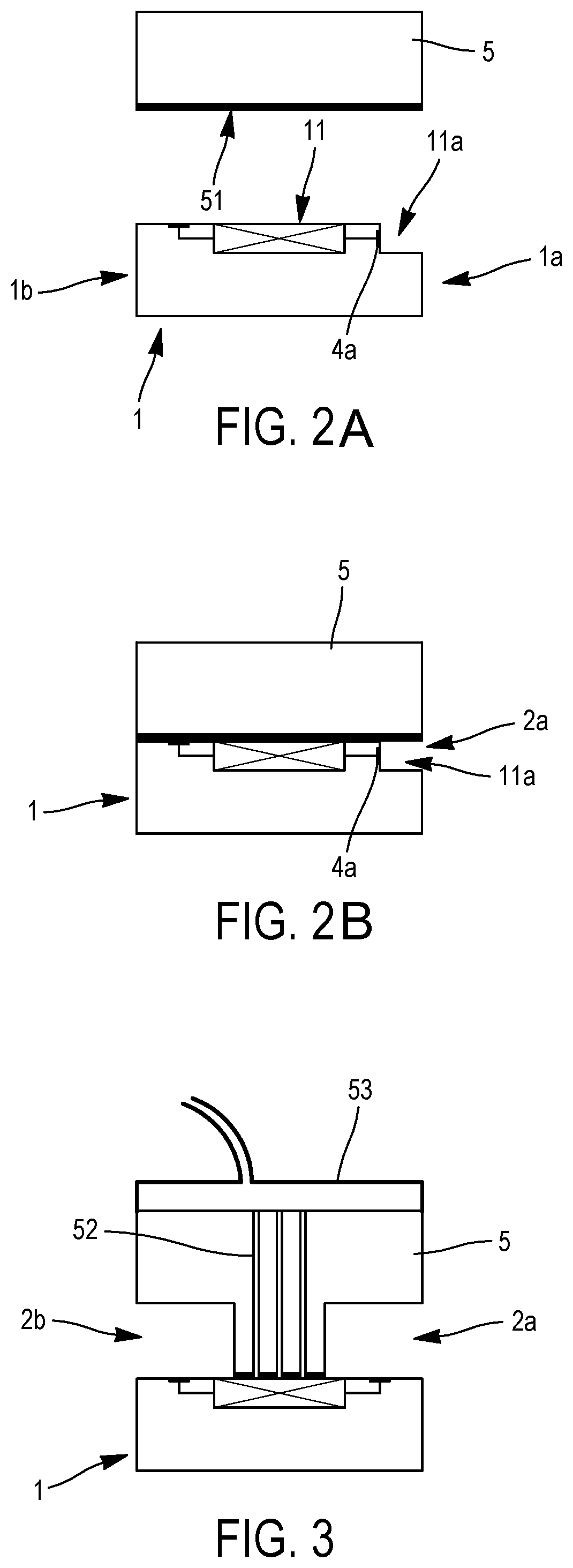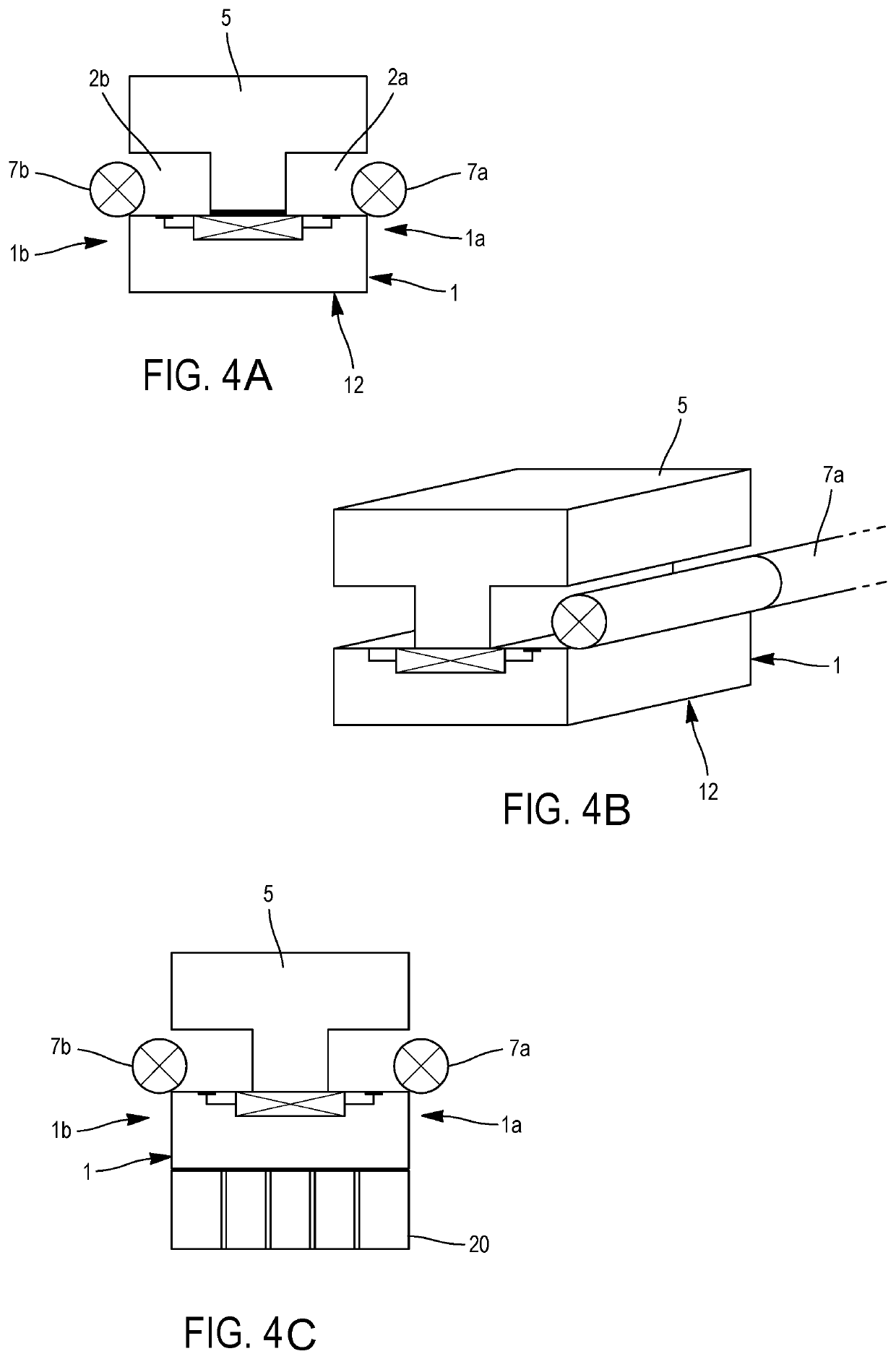Method for joining a micorelectronic chip to a wire element
a technology of microelectronic chips and wire elements, which is applied in the direction of semiconductor devices, semiconductor/solid-state device details, textiles and paper, etc., can solve the problems of difficult to accurately position wires and reliably assemble them on the chip, and achieve the effect of precise and reliable fixing of wire elements on the chip
- Summary
- Abstract
- Description
- Claims
- Application Information
AI Technical Summary
Benefits of technology
Problems solved by technology
Method used
Image
Examples
first embodiment
[0058] cover 5 has a contact face 51 intended to be applied to the first face 11 and having at least one shoulder 5a, 5b (FIG. 1B). This shoulder 5a, 5b makes it possible to form the temporary lateral groove 2a, 2b with the first side 11 of the microelectronic chip 1 when the cover 5 is applied to the chip 1 (FIG. 1C). According to this embodiment, the first side 11 is flat (or substantially flat after the manufacturing steps of the microelectronic component) and it is not necessary to create a specific groove. Advantageously, as shown in FIG. 1C, contact face 51 of cover 5, applied to the first face 11, has two shoulders 5a, 5b to form two parallel temporary lateral grooves 2a, 2b, with the first flat face 11 of the microelectronic chip 1.
[0059]Of course, the contact face 51 of cover 5 may have any number of shoulders, capable of forming temporary grooves, each arranged in any orientation, without departing from the scope of the present disclosure.
[0060]The geometric shape of groov...
second embodiment
[0061]According to the present disclosure, illustrated in FIGS. 2A and 2B, the cover 5 has a flat contact face 51 and the first face 11 of the microelectronic chip 1 has at least one shoulder 11a, to form the temporary groove 2a lateral with the flat contact face 51 of cover 5. The connection terminal 4a can, in this embodiment, be designed in such a way that it leads to the first flank, in the plane of the first face 11, of the shoulder 11a (not shown) or to the other substantially vertical flank of the shoulder 11a (as shown in FIGS. 2A and 2B).
[0062]According to an advantageous variant (not shown), the first side 11 of the microelectronic chip 1 has two shoulders along each of its lateral faces 1a, 1b to form two parallel temporary lateral grooves 2a, 2b, with the flat contact face 51 of the cover 5.
[0063]Of course, the first side 11 of chip 1 may alternatively have any number of shoulders, capable of forming temporary grooves, each arranged in any orientation.
[0064]According to ...
PUM
 Login to View More
Login to View More Abstract
Description
Claims
Application Information
 Login to View More
Login to View More - R&D
- Intellectual Property
- Life Sciences
- Materials
- Tech Scout
- Unparalleled Data Quality
- Higher Quality Content
- 60% Fewer Hallucinations
Browse by: Latest US Patents, China's latest patents, Technical Efficacy Thesaurus, Application Domain, Technology Topic, Popular Technical Reports.
© 2025 PatSnap. All rights reserved.Legal|Privacy policy|Modern Slavery Act Transparency Statement|Sitemap|About US| Contact US: help@patsnap.com



